Category: Stories
January 23, 2015


This is Harbinger No. 1 and it has 731 “favorites” on Flickr.
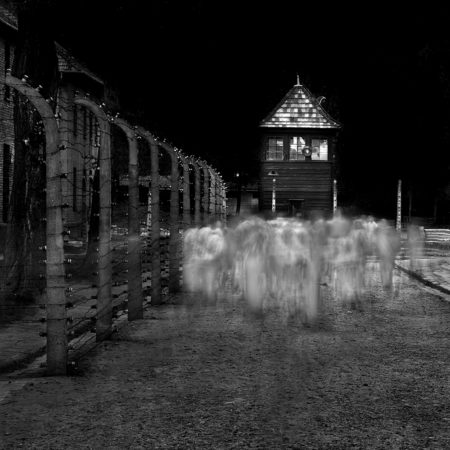
This is Auschwitz No. 14 and it has 20 “favorites.”
Harbinger has nearly 40 times more “favorites” than the Auschwitz image. Does this mean that it’s 40 times better?
What do you think it means?
Cole
October 31, 2014
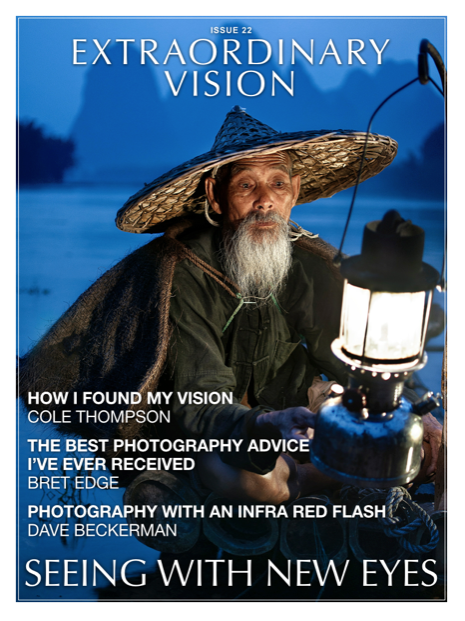
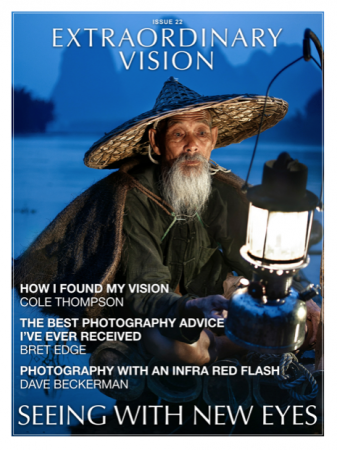
I’m so happy to learn there’s a new magazine out about Vision! It’s great that more and more people are focusing on Vision and less and less about equipment.
I know about this publication because they asked to publish my blog post on “How I Found My Vision.” They did a wonderful job with the article and even gave me a full page ad!
It’s a free publication and here’s where you can find it for Apple and Android:
Also, here is another new image from my Oregon Coast trip, one I created just for fun:

See No Evil, Hear No Evil, Speak No Evil…and Photograph No Evil
July 4, 2014
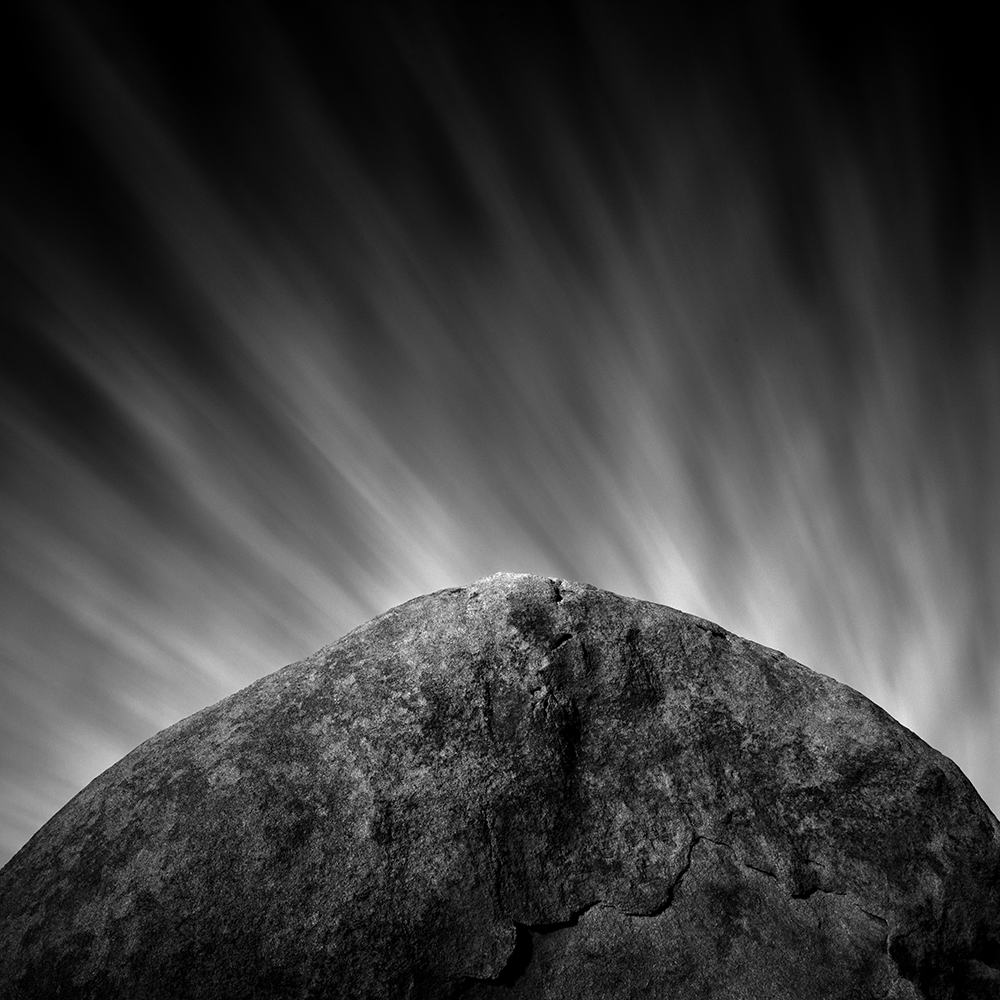
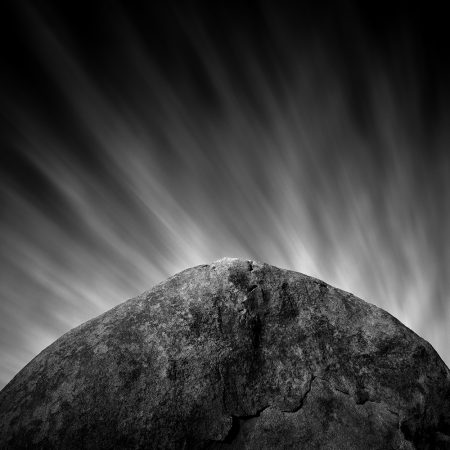
I was exhibiting my “Ancient Stones” portfolio when someone approached.
We both stood there looking at the images when he said: “You just cannot do b&w work like this with digital!”
I didn’t have the heart to tell him, but thought of this anecdote:
“A photographer went to a socialite party in New York. As he entered the front door, the host said ‘I love your pictures – they’re wonderful; you must have a fantastic camera.’ He said nothing until dinner was finished, then: ‘That was a wonderful dinner; you must have a terrific Stove.'” Sam HaskinsApril 25, 2014


A story…
Every autumn I go to Bandon, Oregon to photograph Monoliths. I have very specific conditions that I prefer; clear skies with wispy clouds that allow me to use long exposures on the Monoliths.
Unfortunately this last October I had not called ahead and made this request with Zeus, the god of clouds, rain, thunder and lightning. What I encountered was fog and lots of it, and unfortunately there is nothing for me to shoot in the fog.
So I decided to go up the coast and check out Cannon Beach, I heard they had some great Monoliths and I was hoping that the weather would be better there. Unfortunately it was just as foggy and so I decided to give up and head home where I would rent some movies and veg out.
Because as long as the fog was obscuring my Monoliths, there was nothing for me to photograph there.
But something inside of me said: Wait a minute, there is always something great waiting to be discovered…in every light, in every weather and in every location. It may not fit into your preconceived ideas of what you want, but there is something here for those who can “see.” And so I stayed.
Through the fog I faintly saw people walking towards me and it reminded me of spirits. A title immediately came to mind as I imagined the image: “They Walk Among Us.” Using the fog, a long exposure and by over-exposing, I created this very high-key image…in the fog.
It reminded me that having preconceived ideas (knowing what I want) might sometimes be a strength, but at other times it may make me blind to unexpected opportunities.
Whenever I’m at a location and feeling that there’s nothing for me to see, I’ll ask myself this question: If I had a time machine and could transport all of the great masters of photography here, could they find a great shot?
Of course they could!
So what is the lesson for me? That sometimes I need to look beyond my preconceived ideas of what I want…and see what is being offered.
Cole
April 4, 2014


Iceland No. 30
Why did I include this image in my Iceland portfolio, when I consider it just “average” at best? Because it reminds me of the story behind the image.
It was in September of 2013 that I spend two weeks driving around Iceland and it was heaven: I was alone, I had no itinerary, no reservations and no plans other than to go wherever my eye took me.
I don’t like to embark on a trip with plans and so the only two things that I put on my “to do” list was to soak in the Blue Lagoon hot pools and to photograph the icebergs. I did have a wonderful soak, but the image above was the only one I was able to create of the icebergs, and here’s why:
The weather for most of my trip had been pretty good but on the second half it started to get windy. Living near Wyoming I’m accustomed to strong winds, we often have gusts of 60 mph and sometimes as high as 80 mph. But what I encountered this day in Iceland made those Wyoming winds seem like a mild breeze.
I had driven around the island clockwise and things started getting windy in the east. Then as I approached the south, things really got serious. On the day that I visited Iceberg Lagoon, the winds were so strong that I could barely get out of the car or stand up. I saw people standing at a 45 degree angle as they braced into the wind.
I walked around a portion of the lagoon and tried to photograph, but I literally could not hold the camera still enough. I found a location where a hill blocked some of the wind and by using my tripod very low to the ground and putting my full weight on it, I was able to create Iceland No. 30 above, the only image I got of the icebergs. This was pretty disappointing given that I had come all the way to Iceland to photograph icebergs.
Shortly after leaving the lagoon and continuing west, I started to see an enormous dust cloud coming off of the alluvial gravel fields. These dust clouds were very dark because they were made up of volcanic rock that had been ground by the glaciers over the centuries. It was an odd sight; this low lying ominous dust cloud against a blue sky.
I had just passed the Hotel Skaftafell and decided that I should turn around and not proceed into the dust cloud. I pulled into the hotel parking lot but was immediately stopped by a security guard who said that the hotel was fully booked. It turns out that Matt Damon was filming a movie and he and the film crew occupied the entire hotel. So I’m blaming Matt for what occurred next.
Since I couldn’t stay the only decision to be made was which direction to go: east from where I came or west towards my final destination? I didn’t want to go east because I’d be losing ground and the last hotels I had seen were quite a ways back. So I proceeded west…reluctantly…into the storm.
I approached a bridge with this enormous dust cloud pouring over it and I was having some serious second thoughts about my decision. The bridge demanded an immediate decision from me because once I was on the bridge…there was no turning back. The bridges over these alluvial fields could be very long and they were so narrow as to prevent turnaround.
My indecision became a de facto decision as I started onto the bridge and was immediately met by an oncoming car. My heart half stopped at what I saw: the car’s windows were all blown out on the wind side. I immediately feared that I had made the wrong decision.
Now that I was on the bridge and committed, I could only proceed and hope for the best. What I didn’t know at that moment, was how strong the winds had become. I later learned that this “storm of the century” had gusts up to 134 mph.
The visibility was so poor that I could only drive about 10 mph and the only thing that kept me on the road was the center stripe. Soon the sound of dust blasting the car became the sound of small rocks pelting it. The wind had become so strong that it hurled sharp volcanic rocks into the air, pummeling everything in its path. Well, my car was in its path and suddenly and without warning, the four windows on the wind side of the car simultaneously exploded and I was covered with broken glass.
The rocks that had been smashing against my windows were now smashing against my face as I tried to drive. The wind pressure was so great that my ears hurt and I had to roll down the windows on the leeward side of the car, which relieved the pressure but also allowed the rocks to fly through the car with even greater force.
Fortunately I was wearing a hooded jacket and I used this to shield the right side of my face. This was a very abrasive situation, but how abrasive, I would not appreciate until later.
I had to keep driving because I had no alternative, but I didn’t know when or where I would find refuge. The car was rocking so badly in the wind that I wondered if it would be blown over, and whenever I crossed over a bridge it became so violent that I would bring the car to a stop until the wind subsided a bit.
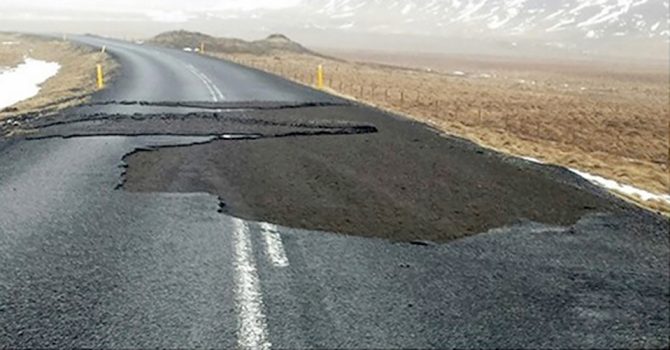
I drove like this for hours, crawling along slowly and clinging to the white stripe on the road. At one point the stripe disappeared because an inch layer of the road surface was actually being blown away, peeling in the wind like an onion. This was unnerving and without the stripe, I was blind for a distance.
Along the way I encountered other drivers coming from the opposite direction and heading into the danger zone that I had just come out of. I would stop and warn them by yelling and using sign language, indicating that they should turn around. Seven cars listened to me and we drove together in a caravan, however one car would not listen and proceeded anyway.
Another car initially ignored my advice and seemed determined to proceed. It was a young couple with a small child in the back seat and on the windward side. Seeing that child and imagining what would happen if they lost their windows really scared me and caused me to become loud and forceful, ordering them to turn around. Which they did.
We caravanned for several hours and finally came across the Fosshotel Nupar. There were rooms available but the hotel was quickly filling as it became a refuge for the travelers in the area. Soon the hotel was full and they had to put people in the lobby and other available areas. The scene there was unworldly, the wind was so fierce that people could hardly make it from their cars and into the hotel. We all huddled together at the windows, watching the cars in the parking lot as their windows exploded, one by one.
We made it through the night and didn’t lose any hotel windows, but the cars were not so lucky. In the morning I surveyed the damage to my car and thankfully I had not lost any more windows, but the remaining ones were sandblasted along with the car’s paint, headlights and wheels. The car was a mess outside and inside it was full of broken glass, sand and small stones.
The winds were still fierce, but much less than the day before and so I decided to drive straight to Reykjavik to get another car. I taped trash bags over the windows and got on my way. The trip was uncomfortable, cold and the bags were soon ripped off the windows by the wind, but I continued on because I desperately wanted a warm car with windows! Along the way I encountered several mild sand storms…but nothing like the day before.
Upon arriving in Reykjavik, the car and I were something of a celebrity. The rental people said that they had never seen a car destroyed by the winds like this and asked how I was going to pay for it. I told them that I had State Farm insurance, to which they replied “not here you don’t!” I had assumed that I was covered by my car policy and so I never purchased the additional insurance. I learned an important lesson that day.
I paid for the damages using my Visa card (at least I got some frequent flyer miles) so that they would give me another car. But to my surprise Chase covered the damages because I had used their credit card to rent the car and had declined the supplemental insurance, thank you Chase!
Armed with a new rental car and better weather, I was able to finish my Iceland journey without further incident. This was the trip of a lifetime, regardless of the images I did or did not bring home.
Was this part of the trip a terrible experience? There were probably moments that I thought so at the time, but I now fondly look back at this as an adventure that I’ll always remember.
And that is the story behind the image.
Cole
P.S. Here’s a photo of the car.
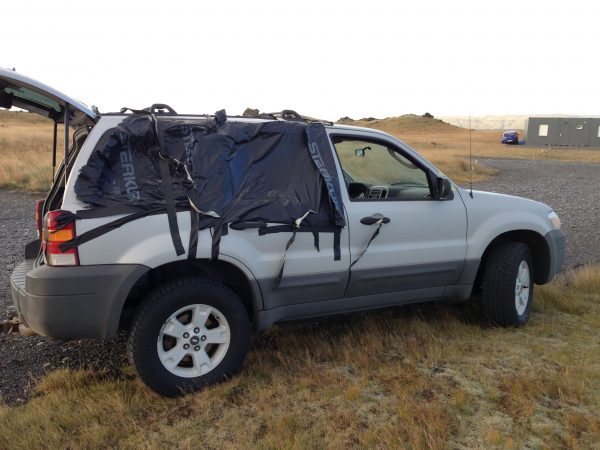
January 23, 2014


“A photographer went to a socialite party in New York. As he entered the front door, the host said ‘I love your pictures – they’re wonderful; you must have a fantastic camera.’
August 23, 2013

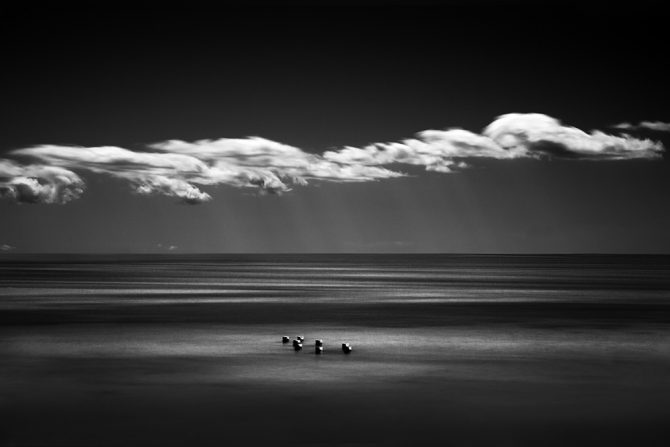
Balance – Split, Croatia
Normally it takes me just minutes to create an image, or perhaps a bit longer if I need to wait for the right conditions. I have a short attention span and if things don’t fall together quickly, I generally lose interest and move on.
However, the image above broke all records and really tested my patience because it took me six hours just to get the shot.
I was walking along one of the popular swimming beaches in Split, Croatia when I saw this scene. Beyond the reach of most swimmers were eight pilings, centered in the bay and protruding just above the surface of the water. I took a few shots and moved on.
The next day I came back and found a better vantage point and set up for another shot. Because I had already photographed the scene and knew what I wanted, I expected to be there for only a few minutes. But just as I was getting ready to click the shutter, a boy swam out to the pilings and sat on them. I thought he’d leave soon and so I waited.
And I waited and waited and waited. I’m not sure what this kid was doing, but I could see him talking and waving his arms in a full-blown conversation with himself.
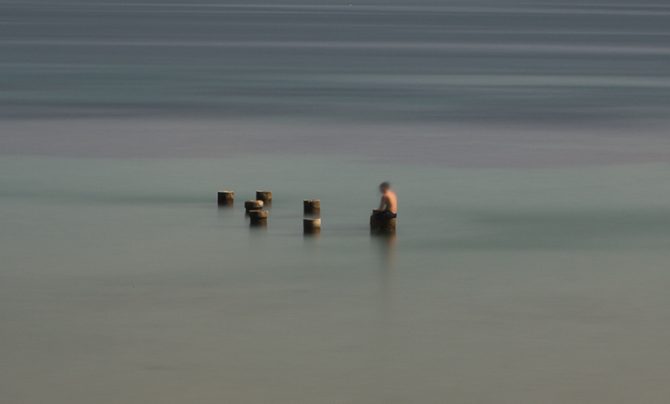
Soon an hour had passed and this kid was still talking! I was starting to get impatient and attempted to do a remote Vulcan mind meld, willing him to leave.

It must have worked because he then slipped into the water. I’m getting all set to make the exposure because I think he’s leaving…but no, he’s gotten back onto the pilings and has continued his conversation.
At this point I’ve got two hours invested into this shot and nothing to show for it, and this kid is still yakking away! I think about leaving, but stay and hope that he’ll run out of things to talk about.
Now three hours have passed and this kid is still out there! In my head I’m screaming “GET OFF THE PILINGS” as he continues to talk to himself.
Finally after about four hours he swims away. Now I can get continue!
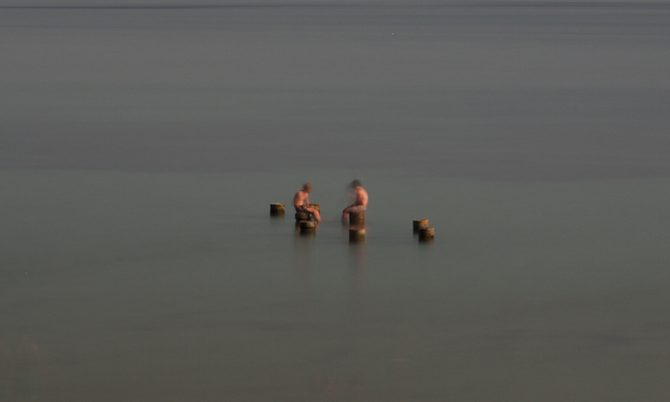
But no, two new people swim out to the pilings. I tell myself that this last kid was an anomaly and that these two will not stay for very long.
Oh, but I be wrong! One hour later and those two are still out there and I can’t believe this. What should I do, leave and cut my losses or protect the time I’ve already invested and wait?
I decide to wait, knowing that with my luck, just as soon as I leave they would too.
It’s now been six hours since I first set up for that “quick shot.” I’m hot, hungry, dehydrated and almost delusional. I’m like Humphrey Bogart’s character in “The Treasure of Sierra Madre,” ranting and talking to myself.
Passer-by’s are staring at me and giving me a wide berth. But there’s no way that I can leave now, it’s a matter of principle, I must get this shot!
Finally the two leave and I am able to create the image “Balance” after six hours of waiting.
What lesson did I learn from those six hours? Wear sunscreen, I really got burnt.
Cole
June 15, 2013


I was recently in Saint Petersburg, Russia visiting Peterhof Palace, which is Peter the Great’s summer home.
While walking around the grounds I saw this line of trees that caught my attention. They were still bare from winter and had been neatly trimmed to look like giant lollipops. They caught my fancy and I took about an hour to photograph them from every conceivable angle and composition…except one.
As I was leaving I took one shot on my iPhone to email family and to put in our scrapbook. This iPhone shot was different from the other images I took with my Canon, it was a wide angle shot of all the trees.
When I got home and reviewed the images, I was disappointed because there wasn’t a single one that I liked. But then I remembered the iPhone image…

This is the original iPhone color shot and as you can see, the trees are just a small part of the image. I never imagined that an iPhone image, and one with the subject this small, could ever be made into a decent image. But just for the fun of it, I opened it in Photoshop and processed it.
First I converted to a 16 bit image and into black and white.
Then using curves, I adjusted the image to appear as a silhouette.
I cropped it into a pano.
And removed the people from the scene (it just felt better without them).
Finally I burned down the sky for this resulting simple image.
Because the image was created with a relatively low resolution iPhone, I was worried how it would look when printed. But because it looked good on the screen, I made a 15 inch wide test print and it looked great! I was very impressed with how good an iPhone image could look at this size.
Here are a few thoughts I had about this experience:
It reinforced my belief that you don’t need the best equipment to create great images. Sure, we’d all prefer to have the best equipment, but there are other ingredients that are much more important.
When you find a great shot, shoot every conceivable angle, composition and exposure. I know some people that believe you should take your time, carefully consider the composition and then take only one shot…but I personally don’t want to travel halfway around the world only to discover that my one shot missed the mark! My approach is to take many shots and reduce the chance of coming home empty handed.
Vision works best when it directs the shot and the processing. However in this case my vision missed the shot but was able to make up for it later during processing. Vision, no matter when it occurs, is a good thing.
While I’m not planning on pursuing iPhoneography, I sure am grateful that I had this one iPhone shot!
Cole
February 8, 2013
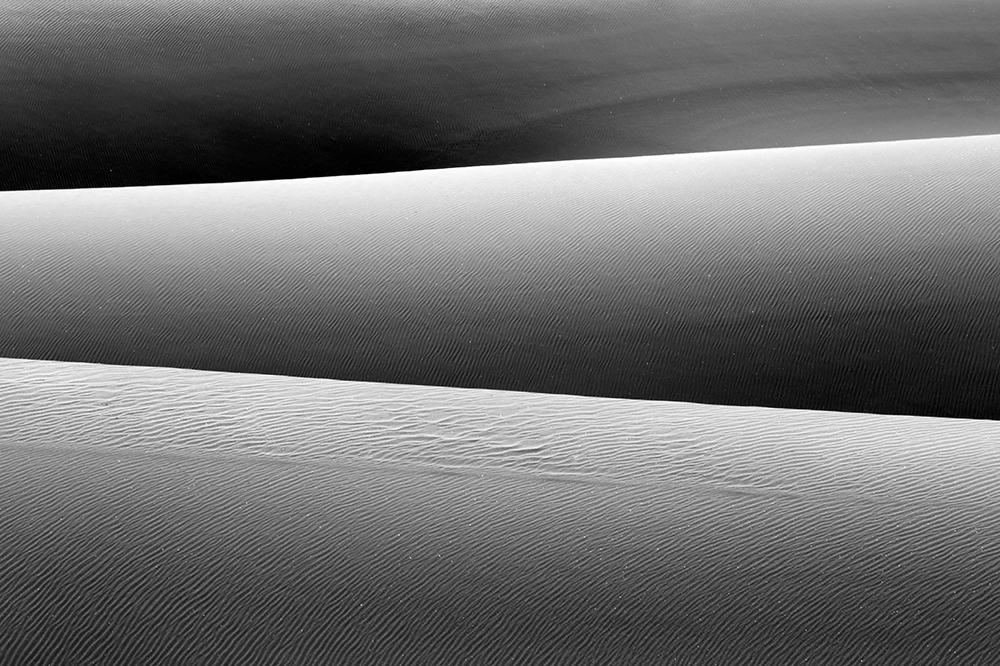

Sunday I arrived home after spending 16 days in Death Valley. It was a fantastic trip; the weather was perfect, it was relaxing and I felt very productive. Each night I’d review my images and the compositions were looking good. However the images had a funny look to them on the camera’s screen, they were flat and dull, but it was a new camera and so I figured that I had the brightness adjustment set a little differently than on my other camera.
When I got home and all caught up with two weeks worth of mail, email and phone messages, I anxiously began processing my images. As I reviewed the thumbnails, the images again looked a little odd, they were very flat. Then I noticed that I was looking at a JPEG, which I thought was okay because I had set my new camera to record in both RAW and JPEG. However as I looked for the RAW files, my heart stopped when I realized they weren’t any. I went back to the CF Card and they weren’t there either.
I could not believe it. I had shot for those entire 16 days and didn’t have a single RAW file to show for it. I went into the camera settings to see how I had set up the camera and sure enough, I had misread the settings and had mistakenly it set to record only in JPEG. I was devastated because as I reviewed the images it appeared to me that I wouldn’t be able to salvage a single one.
The problem was twofold: First the images were recorded in JPEG and were a much lower resolution than the RAW files I normally work with. And second, the files were recorded in B&W which meant that I could not convert them they way I wanted using the color channels. This took much of the creative control from me. As I worked on some of the files I concluded that I wouldn’t be able to use any of them.
That was a very long night for me. I could not stop thinking of all of the mistakes I had made:
Setting up the camera wrong.
Not creating some test images before I took the camera into the field.
Not processing some of the images while on the trip, which would have uncovered the problem.
Not digging deeper into why the images on the camera’s screen looked funny.
I felt pretty foolish and just couldn’t believe that after all of that time, money and shooting, I was coming home empty handed. It was a long sleepless night.
The next day I thought that I’d take another stab at some of the images, perhaps by using some different techniques a few might be salvaged? After working on them for a few hours, it turns out that I might be able to save about five of the images. Not a lot to show for 16 days work, but a lot more than I thought I had last night!
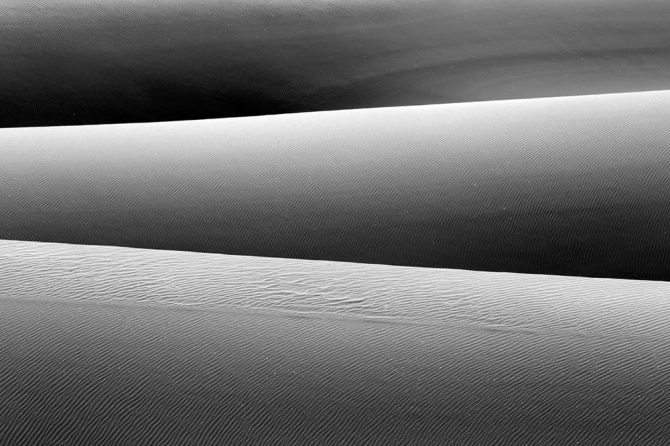
I felt foolish for making such a silly error and thought maybe I’d say nothing about this to anyone and just quietly show the five images, but I then thought better of it. That was pride speaking and the truth is that I messed up and I need to share this experience to keep myself humble and to help others from making the same mistake. This disaster was completely avoidable and I’m grateful that I’ve learned this lesson now, before I travel to Iceland later this year. Can you imagine coming home from Iceland with no images? Now that would have been a tragedy!
So, please learn from my mistake and tuck this experience away. When you get a new camera, test it out thoroughly before you head out on a big photo trip. And if something doesn’t look right, investigate it right then and there until it’s resolved.
Also, after working with these JPEG files and seeing their limitations, I must reinforce my previous recommendation to always shoot in RAW! There is an ENORMOUS difference between RAW and JPEG, and you are handicapping yourself when you work in JPEG.
I’ll be finishing these images over the next several weeks and will introduce them in the next newsletter. In the meantime, the above image is one that I think I’ll be able to salvage.
Cole
January 31, 2013


Isn’t the iPhone incredible? Beautiful 180 degree panoramas created in the field in seconds!
Today I visited the Armagosa sand dunes, near Beatty, NV. I was the only one there and the dunes were pretty clean.
Here’s a short video of my visit.
And a 45 second time-lapse video.
Cole
